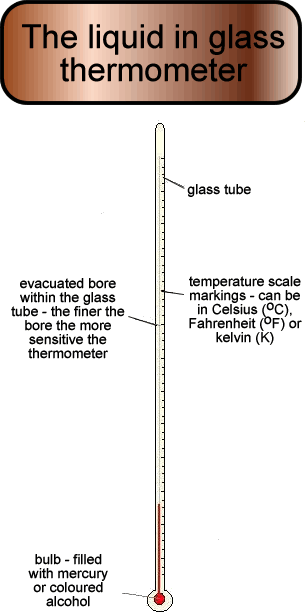|
|
|
Using
a Liquid-in-Glass Thermometer
 
-
Treat
the instrument with care - the glass bulb is easily broken.
-
Immerse
the bulb in the substance and wait until the thread in the tube
settles to a steady value - it takes time for a liquid to expand
or contract.
-
It
is best to keep the bulb immersed all of the time otherwise the
thermometer will start to adjust to room temperature - if you have
to leave it standing in the container be careful to check the stability
of the apparatus before you let go of it - otherwise make sure that
it has time to adjust before you take the next reading!
-
Take care - while
holding a thermometer as you heat a container of liquid you have
to make sure you do not burn yourself or set fire to the sleeve
of your labcoat.
-
Stir
gently for about ten seconds before you intend to take the reading
- some parts may be hotter or cooler than others
-
Take
the reading at eye level (care if heating not to set your hair alight!)
-
Double
check that you understand what each division on the scale represents
and get a friend to check the reading.
|

Follow me...




|


